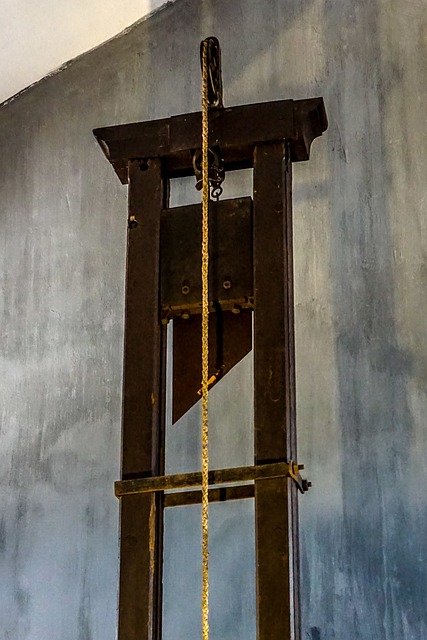By Tim Lambert
Most of us associate the guillotine with the French Revolution. However, mechanical devices for beheading people were used in Europe long before then. One was recorded in Dublin in 1307. The Scots had a beheading device called The Maiden, which was used between 1564 and 1710. Meanwhile, in the town of Halifax in England a beheading device was used between the Middle Ages and the middle of the 17th Century. It was called the Halifax Gibbet.
However, in 1790 Joseph-Ignace Guillotin (1738-1814) recommended to the French Assembly that a beheading device should be used as a humane method of executing people. The French Assembly agreed to this in 1791. A decapitating device was built and it became known as a guillotine.
The first person in France to be executed by guillotine was a highwayman named Nicolas Jacques Pelletier in 1792. At first, executions were held in public. The last person to be guillotined in public in France was Eugene Weidmann in 1939. (Incidentally, the horror actor Christopher Lee was among the watching crowd).
The last woman to be guillotined in France was Germaine Leloy-Godefroy in 1949. (She was having an affair and she killed her husband with an axe while he was sleeping). The guillotine was last used in France in 1977 when a Tunisian immigrant called Hamida Djandoubi was executed. France banned capital punishment in 1981.
The guillotine was also used to execute people in Nazi Germany. It was last used in West Germany in 1949 and in East Germany in 1966.
Meanwhile, the guillotine was brought to Vietnam in the early 20th Century when it was a French colony. The last execution in Vietnam by this method was in 1960.
